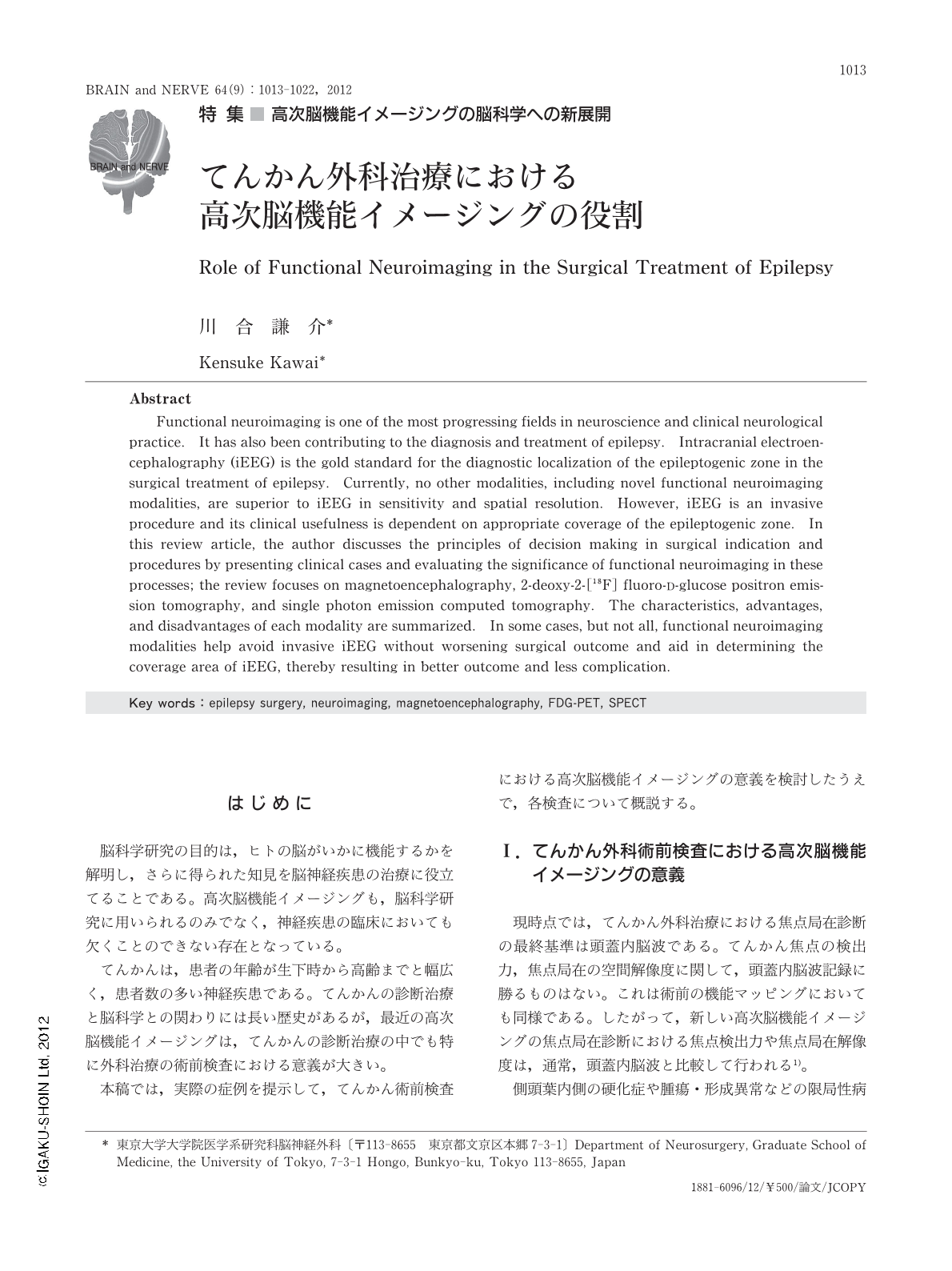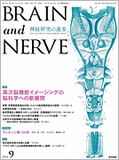Japanese
English
- 有料閲覧
- Abstract 文献概要
- 1ページ目 Look Inside
- 参考文献 Reference
はじめに
脳科学研究の目的は,ヒトの脳がいかに機能するかを解明し,さらに得られた知見を脳神経疾患の治療に役立てることである。高次脳機能イメージングも,脳科学研究に用いられるのみでなく,神経疾患の臨床においても欠くことのできない存在となっている。
てんかんは,患者の年齢が生下時から高齢までと幅広く,患者数の多い神経疾患である。てんかんの診断治療と脳科学との関わりには長い歴史があるが,最近の高次脳機能イメージングは,てんかんの診断治療の中でも特に外科治療の術前検査における意義が大きい。
本稿では,実際の症例を提示して,てんかん術前検査における高次脳機能イメージングの意義を検討したうえで,各検査について概説する。
Abstract
Functional neuroimaging is one of the most progressing fields in neuroscience and clinical neurological practice. It has also been contributing to the diagnosis and treatment of epilepsy. Intracranial electroencephalography (iEEG) is the gold standard for the diagnostic localization of the epileptogenic zone in the surgical treatment of epilepsy. Currently, no other modalities, including novel functional neuroimaging modalities, are superior to iEEG in sensitivity and spatial resolution. However, iEEG is an invasive procedure and its clinical usefulness is dependent on appropriate coverage of the epileptogenic zone. In this review article, the author discusses the principles of decision making in surgical indication and procedures by presenting clinical cases and evaluating the significance of functional neuroimaging in these processes; the review focuses on magnetoencephalography, 2-deoxy-2-[18F] fluoro-D-glucose positron emission tomography, and single photon emission computed tomography. The characteristics, advantages, and disadvantages of each modality are summarized. In some cases, but not all, functional neuroimaging modalities help avoid invasive iEEG without worsening surgical outcome and aid in determining the coverage area of iEEG, thereby resulting in better outcome and less complication.

Copyright © 2012, Igaku-Shoin Ltd. All rights reserved.


